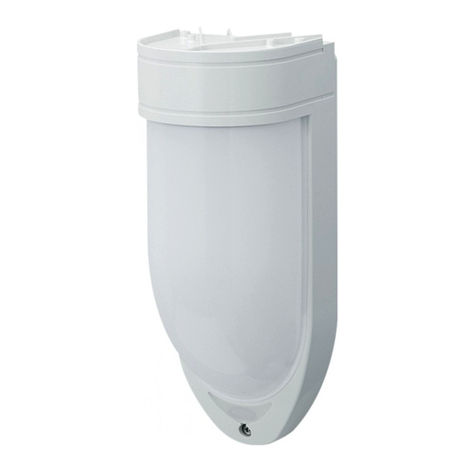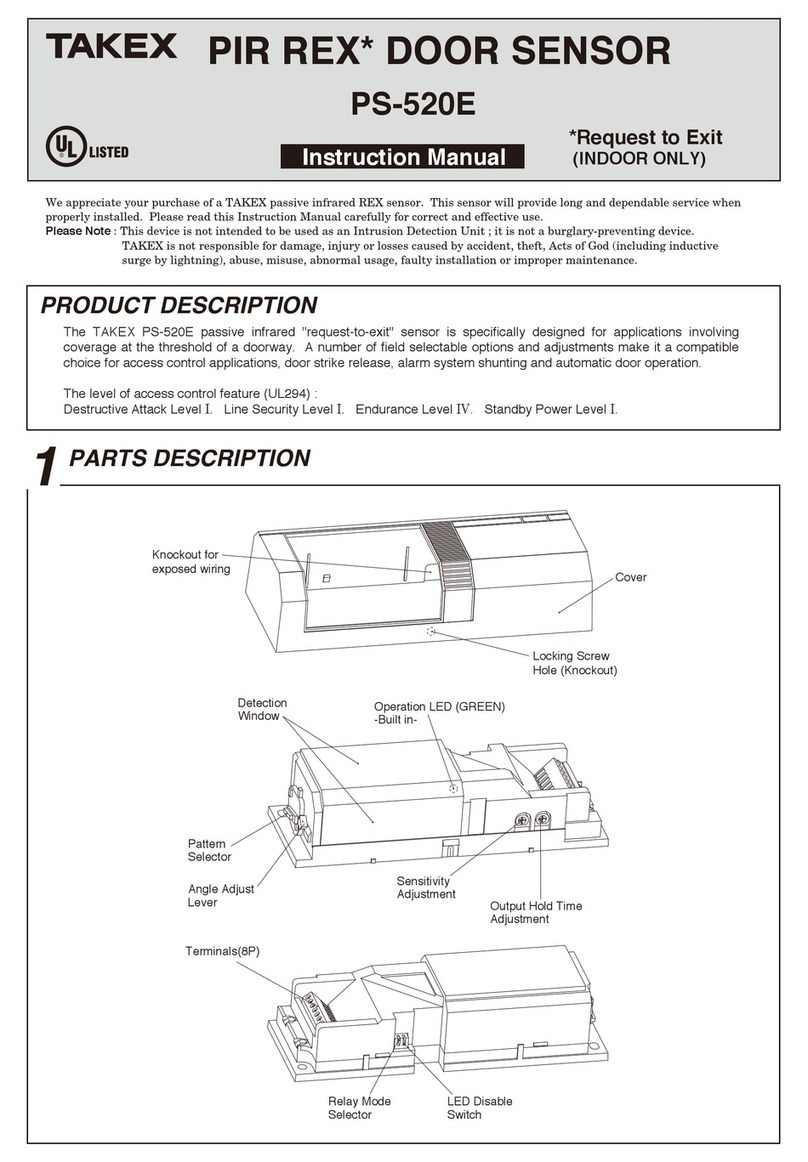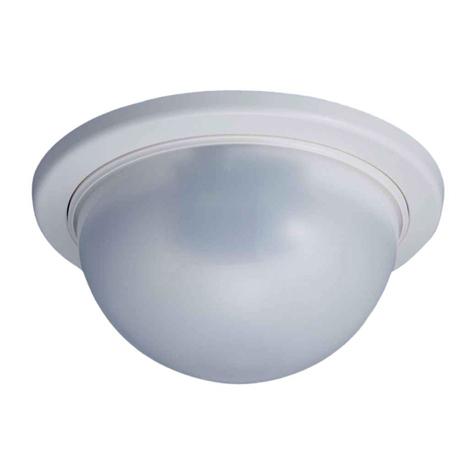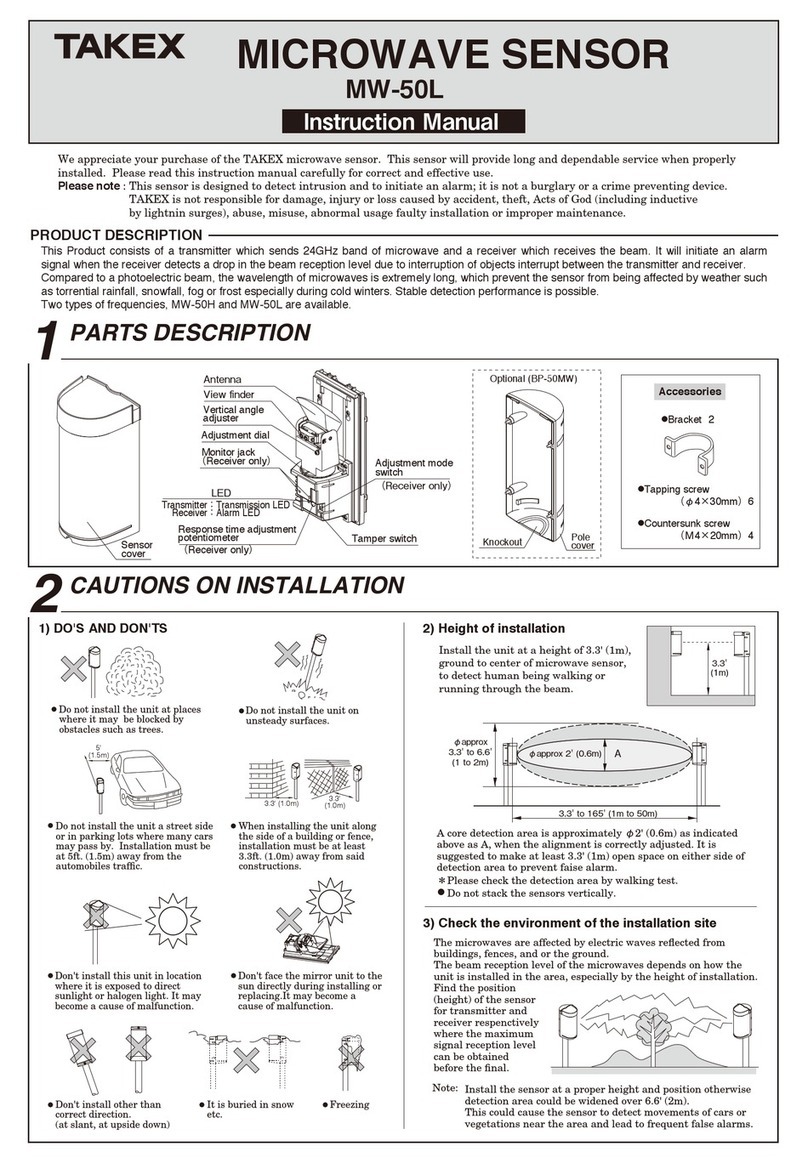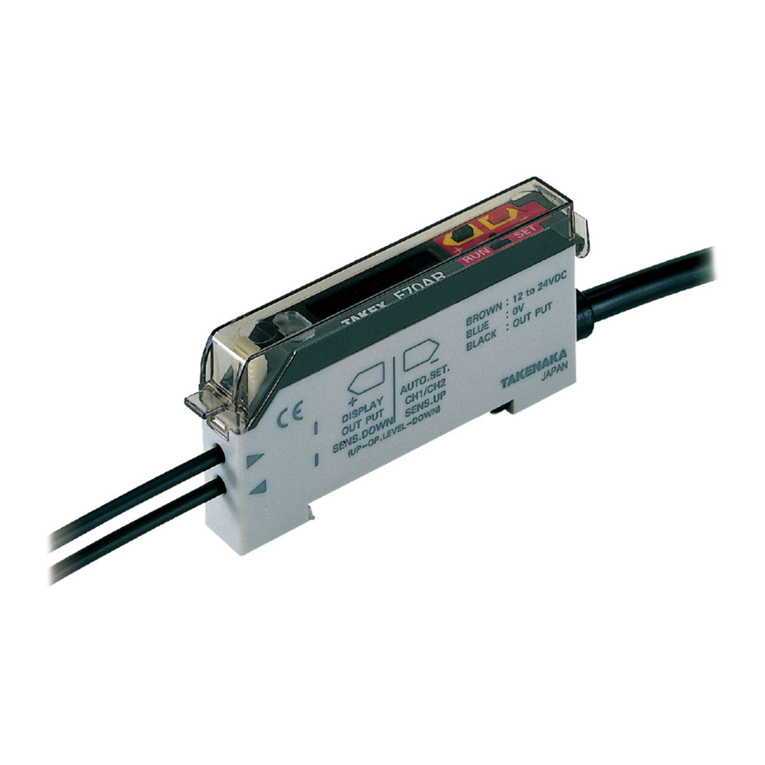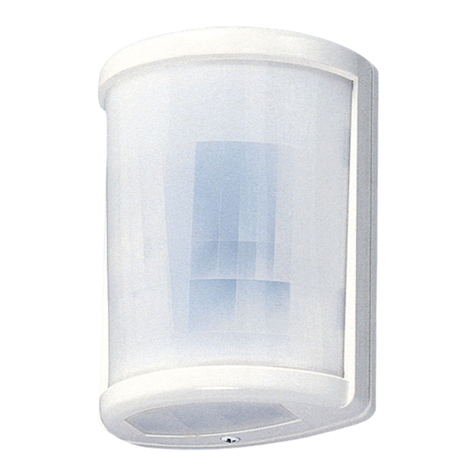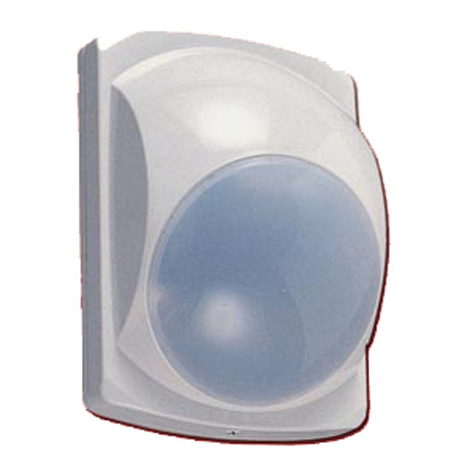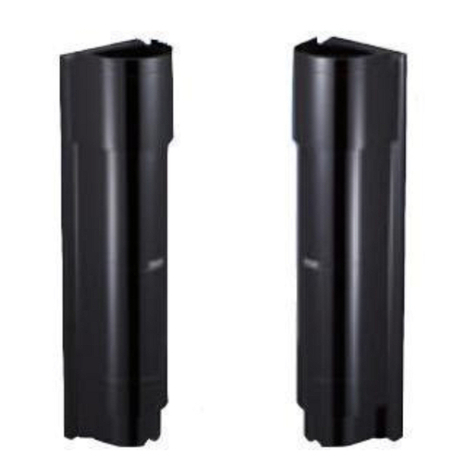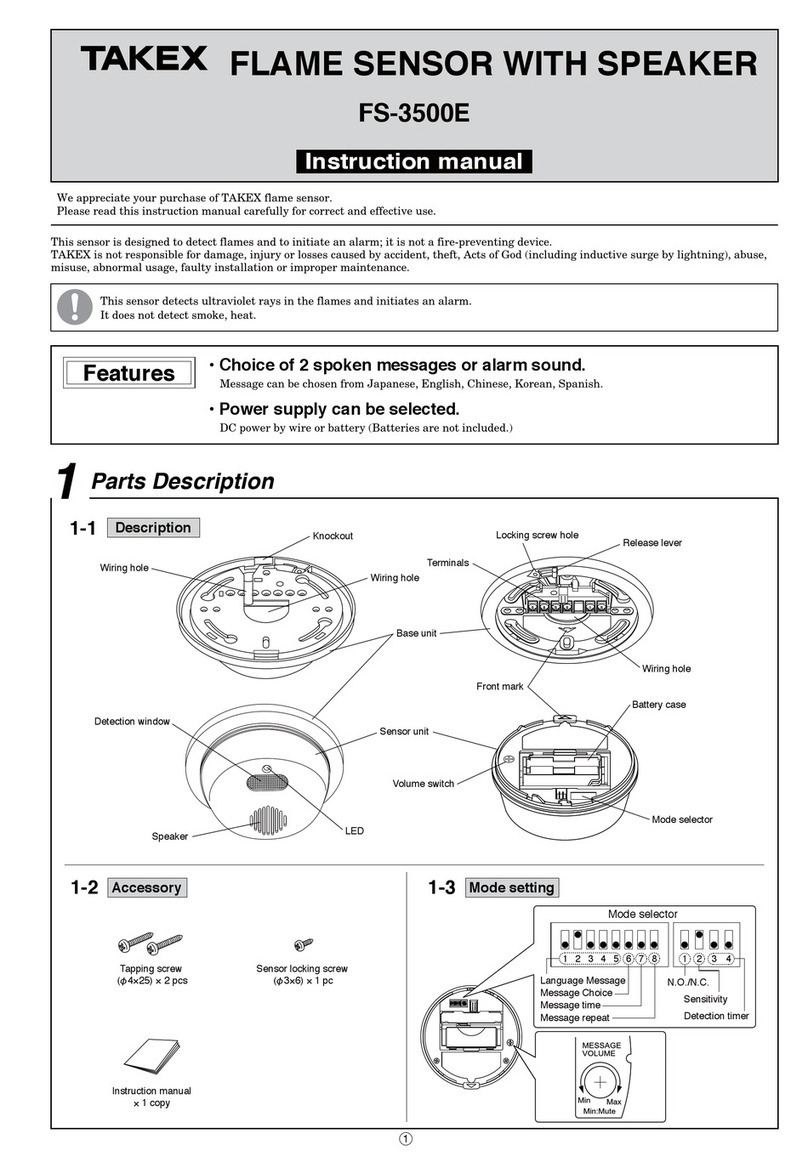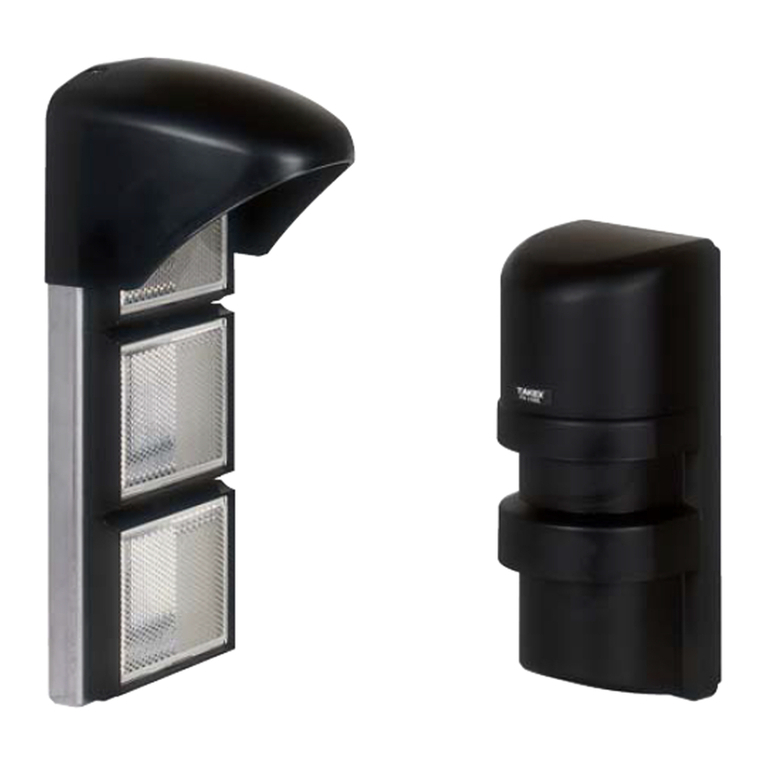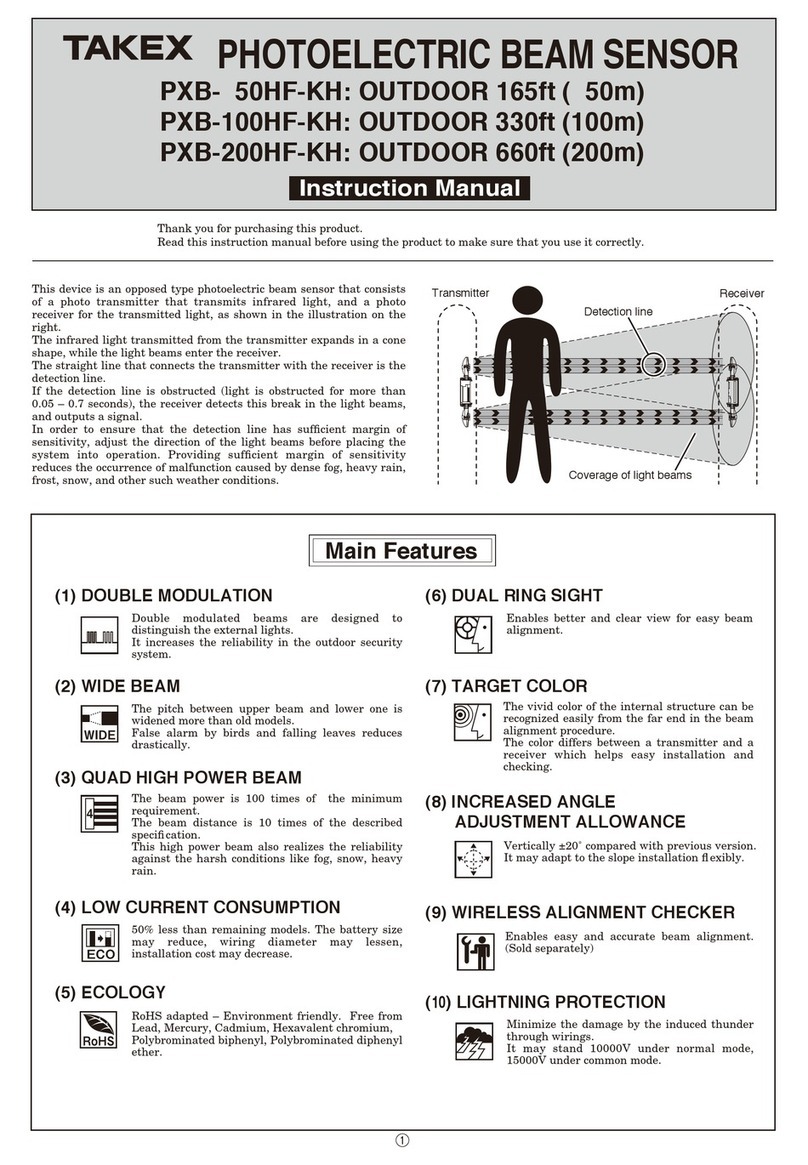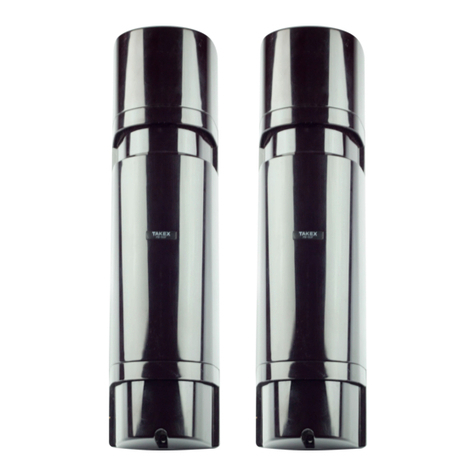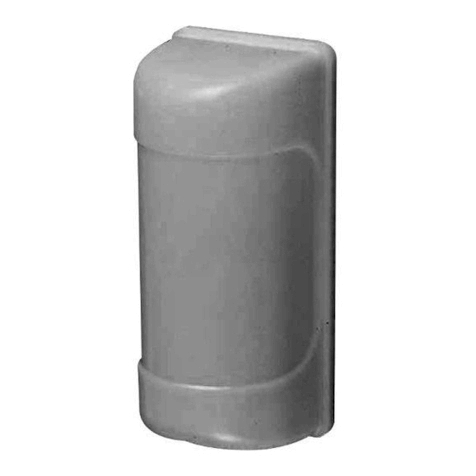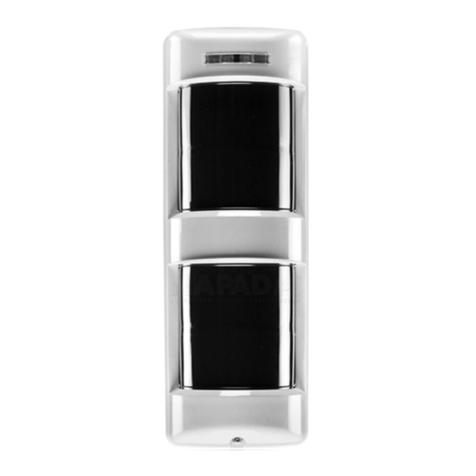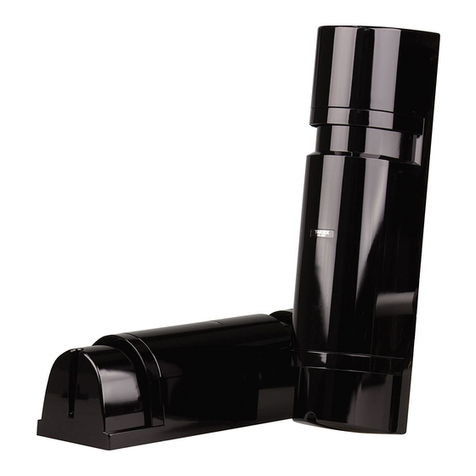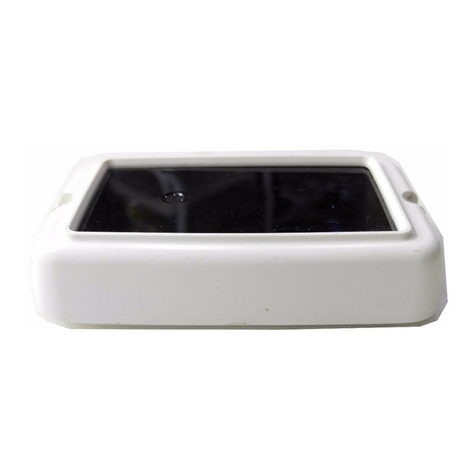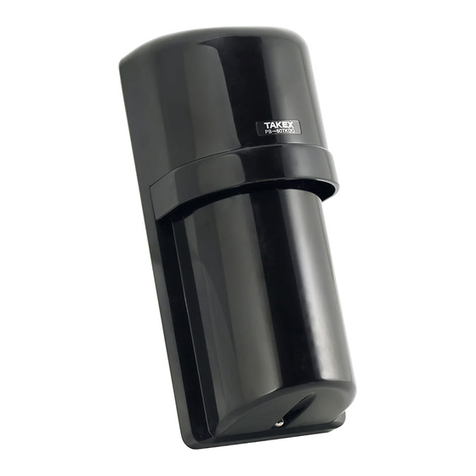SENS. :Sensitivity adjustment volume
L.ON/D.ON :Light-ON (ON when light is received)/Dark-ON
(ON when light is blocked) mode selector switch
4/8 (excluding H type) :Anti Mutual Interference selector switch (4: 4
units/8: 8 units)
Turbo mode selector switch (4: turbo off/8: turbo on)
NOR/ON.D/:Timer selector switch
OFF.D (Disabled/On delay/Off delay)
Operation indicator
The orange LED is illuminated when the signal is activated.
Stability indicator
The green LED is illuminated when the received light level is well above (120% of) the activation
level. As long as the stability indicator is illuminated when the light is received, the stability of the
detection is ensured without being affected by variation of environment such as ambient temperature.
Anti Mutual Interference/turbo function (excluding H type)
The Anti Mutual Interference selector switch doubles with turbo function
selector switch.
Switch set to 8 : The Anti Mutual Interference feature is
available for up to 8 units and the turbo
function is enabled.
Switch set to 4: The Anti Mutual Interference feature is
available for up to 4 units and the turbo
function is disabled. The response time is
250 μs.
Interference may be prevented for up to 4 units
(the response time is 250 μs with this setting).
Interference may be prevented for up to 8 units
(the response time is 500μs with this setting).
Stability output
The stability output can be used to check for reduction of the light
intensity level along with any change in the operating environment or
operation over time or to perform initial check of the operation.
When four consecutive detections have occurred with the level of
received light exceeding the operation level but not reaching 120 percent
of the level (range not allowing stable operation), the stability signal is
output when the control output is deactivated for Light-ON mode. The
stability indicator starts flashing at the same time as the activation of the
stability output. If the level of received light gains a margin, the stability
output is deactivated and the stability indicator stops flashing and
becomes illuminated (normal illumination).
Sensitivity adjustment
Reflective type (adjustment for Light-ON mode)
①Place the object to be detected in a given position, turn up the
sensitivity adjustment volume (SENS) gradually from Min. and find
the point at which the operation indicator (orange LED) is
illuminated (Point A).
②Remove the object, turn down the sensitivity adjustment volume
gradually from Max. and find the point at which the operation
indicator (orange LED) goes out (Point B). (If the operation
indicator is not illuminated even at Max., Max. is regarded as Point
B.)
③Set the volume at midway between Points A and B.
④With the object placed in a given position (light reception state),
make sure that the stability indicator (green LED) is illuminated.
Through-beam type (adjustment for Light-ON mode)
①With the object to be detected removed, turn up the sensitivity
adjustment volume (SENS) to Max. and make sure that the
operation indicator (orange LED) and stability indicator (green LED)
are illuminated. (If the stability indicator is not illuminated, the set
distance may be too long or the light axis may not be aligned.)
②Turn down the sensitivity adjustment volume gradually from Max.
and find the point at which the operation indicator (orange LED)
goes out (Point A).
③With the object placed in a given position, turn up the sensitivity
adjustment volume gradually and find the point at which the
operation indicator (orange LED) is illuminated (Point B). (If the
operation indicator is not illuminated even at Max., Max. is regarded
as Point B.)
④Set the volume at midway between Points A and B.
⑤With the object removed (light reception state), make sure that the
stability indicator (green LED) is illuminated.
Anti Mutual Interference
This product is equipped with the Anti Mutual
Interference feature that takes advantage of
optical transmission. The optical transmission
system uses the transmission windows including
emission and reception windows in the sides of
an amplifier unit as a light path. For this reason,
amplifiers must be mounted adjacently on a DIN
rail so that the transmission windows of adjoining
units are aligned for secure functioning of the
Anti Mutual Interference feature.
Turbo function
Setting the turbo mode selector switch to “8” enables the turbo function.
With this function enabled, the response time is increased to 500 μs but the
detecting distance is also increased by about 30% compared with that for
the turbo function disabled (set to “4”).
